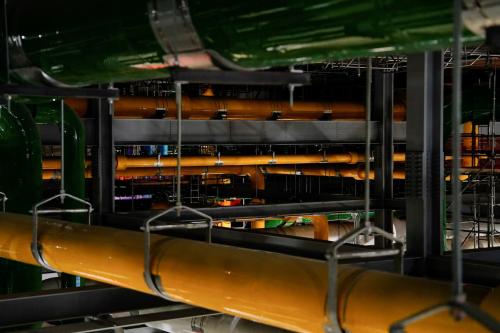Blue Origin’s successful landing on November 24 of their suborbital launch vehicle, New Shepard, sparked further debates on the direction of America’s launch program and the role of the commercial sector in future missions. But Blue Origin is not the only company testing their own reusable launch vehicles (RLV). Space Exploration Technologies Corporation (SpaceX) has also been developing RLV technology with the latest recovery attempt potentially scheduled for the OrbComm launch of 11 satellites, pending the results of a delayed pre-launch static fire test.
Tourism and cargo
These two companies are approaching RLV development through significantly different means and should not be closely compared. Blue Origin’s suborbital tests max out at approximately 100 km in altitude, reaching the edge of space, while SpaceX’s tests were reaching the 400 km mark. The first is meant for the space tourism market, while the latter can be used to deliver crew and cargo to the International Space Station (ISS) or to launch satellites into orbit.
Both the conceptual and applied framework for developing RLV has been in the works since the beginning of the space age. In the 1990s, Lockheed Martin’s developments of suborbital space planes such as the X-33 were funded under NASA’s Space Launch Initiative. The ultimate goal was to create a robust space transportation system that could eventually provide assured and routine access to outer space for both NASA and the Department of Defense (DoD). The closest the U.S. came to having a reusable launch program was during the Shuttle era, when NASA was able to reuse the orbiter and the two solid rocket boosters used for each mission.
To reuse, or not to reuse?
The use of RLV is certainly not a new concept, and has been prone to criticisms for its arguably higher development costs. Compared to RLVs, the expendable launch vehicles used today are discarded after a single use and allow for the usage of less expensive materials that only need to last one launch. Development of effective RLVs would require stronger material that would need to meet X number of launches for there to be an economic profit gained from each vehicle.
The recent upsurge to revitalize RLV development in the U.S. has become cause for concern internationally. In January 2015, France’s space agency, CNES, announced their intent along with many other European partners to begin a small research project on developing a reusable liquid oxygen and methane-powered stage of their Ariane rocket. This comes after a decade-long pause in developing RLV technology.
Introducing RLVs into the current launch market would have a significant impact on how NASA and the DoD would go about purchasing launches from these companies. But RLVs pose a more theoretical long-term challenge to staying competitive in today’s market. On December 18, as part of the 2016 omnibus spending bill, Congress lifted the ban on the ability of companies to use foreign-made rocket engines. This allows United Launch Alliance (ULA), whose Atlas 5 rocket depends solely on the Russian-made RD-180 engine, to remain competitive against SpaceX for launching national security payloads. Also, the 2016 bill allocated $1,243.8 billion toward commercial crew, which would allow NASA to maintain its current Commercial Crew program. If successful, this would result in the recovery of an independent U.S. launch capability by 2018, instead of continuing to depend on Russian Soyuz flights to the ISS.
Newspace
Corporations such as Lockheed Martin, Boeing, and Aerojet Rocketdyne came under the first wave of American aerospace companies participating in the U.S. space program, creating a platform and backbone for which commercial companies have such a clear presence in the space sector. Blue Origin and SpaceX are part of a larger group of aerospace corporations that are commonly referred to as “Newspace,” and have arguably transformed the more traditional government-commercial space sector relationship. The majority of these corporations were created in the late 1990s and early 2000s by wealthy entrepreneurs who wanted to develop the next wave of emerging space technology.
While these start-ups have some ways to go before gaining the same standing as Arianespace (Europe’s prominent commercial launch provider) or ULA as international launch providers, they have had a significant impact on revitalizing discussions on the role in which the commercial sector could play in advancing America’s space program. Attention for the time being should be shifted toward re-establishing an independent U.S. launch capability first through the private sector, and placing RLV’s as a long-term endeavor saved for a more stable launch market.
The Brookings Institution is committed to quality, independence, and impact.
We are supported by a diverse array of funders. In line with our values and policies, each Brookings publication represents the sole views of its author(s).




Commentary
Launch dilemma: The role of the commercial sector in America’s space program
December 21, 2015